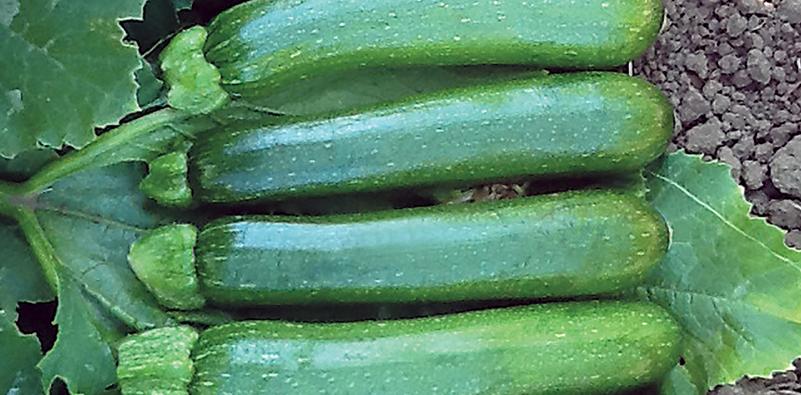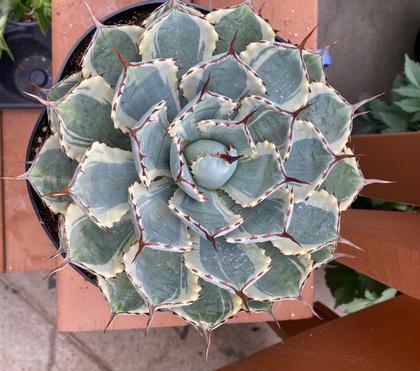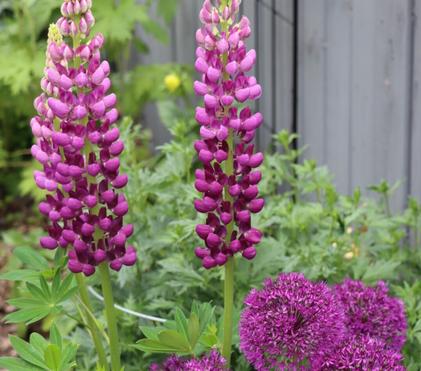How To Grow Food With Less Work
When we first planted our vegetable garden in rows, our first spring in our acreage home, it never occurred to us to plant more than one kind of vegetable in any row. I’d never seen it done any differently, nor even heard it spoken about. But after a few years of gardening, and a whole lot of attention given to the soil, the sun, the moisture, and the bugs, I’ve become very interested in the practices of companion planting, intercropping, and succession planting. Any technique that improves the taste and yield of our vegetables, while reducing the amount of work I have to do to produce those vegetables, is worthy of my attention and my evaluation.

Zucchini 'Green Machine'
Growing different plants together immediately appealed to me because of my love for woodland and natural areas. In nature, everything is layered with leafy trees (high to mid canopies), shrubs (understory) plantings and ground cover. Nature always has its own way to support life; connected, symbiotic relationships that give benefit to one or both without harming the other. When I began to think of my vegetable garden in this way, a whole world of benefits became clear. Making a “community” of plants helps attract supportive animals and gets rid of pests.
Benefits of Companion Planting as compiled by The Old Farmer’s Almanac
- Deterring pests: Onions, garlic and other members of the onion family are universally despised by aphids, mites and many other garden pests. Common garden pests hate the smell of flowers and herbs with strong aroma, and will choose to avoid gardens where they grow.
- Attracting beneficials: Birds, bees, and butterflies are pollinators which help your garden grow, and at the same time are natural predators for slugs, aphids, caterpillars and grasshoppers.
- Shade regulation: Large plants provide shade for smaller plants. Leafy vegetables, such as chard, spinach and salad greens, are the most tolerant vegetables that grow in shade.
- Natural supports: Corn and beans are the classic example and are two of the “Three Sisters” method of companion planting that Indigenous tribes utilized with great success.
- Improved plant health: Basil will improve vigour and flavour of tomatoes and peppers, also repelling its pests.
- Improving soil fertility: Pole beans and peas are perhaps the most widely known for improving the soil. They absorb nitrogen from the air and release ammonium nitrogen into the soil.
- Weed suppression: Sweet alyssum is a low growing plant with a pleasant scent that is extremely effective as living mulch. It attracts beneficial insects and crowds out weeds, yet does not overcrowd its neighbours.
Intercropping, or interplanting, is an old-fashioned method that is finding new interest with modern gardeners. It is a wonderful solution for the small spaces gardener because it is key to making the most out of their limited garden space. It is very similar to companion planting though has less focus on symbiotic relationships between different plants and more focus on the style or pattern of growing. The best matches are often opposites: slow and fast growing plants, tall and short plants, deep and shallow rooted, and heavy and light feeders.
One of my very wise coworkers uses a trap crop in her flower bed. A trap crop approach in interplanting is when a cultivar more attractive to a specific pest is planted alongside the main crop as a sacrifice or distraction to the pest. She plants Catnip in her flower bed border. The neighbourhood cats are so distracted by the delicious scent of the plant, that they avoid the soil around her other flowers and do their business elsewhere. Oh, how I wish I had known her and she had told me this method 20 years ago!
Succession planting is a useful technique for any vegetable garden, large or small, but it is all the more valuable when space is limited. It allows you to keep your garden in harvest and producing all through the growing season. Relay succession planting is a kind of succession planting in which you sow any given crop on a time spaced schedule. Plan on sowing a new set of seeds once every two to three weeks. By planting in succession, you will produce enough food for your family's appetite, and you'll have it all summer, rather than all at once.
I will be implementing all of these techniques in the spring this year and am already making notes in my gardening journal. I am most excited about planting my own “Three Sisters” (sweet corn, pole beans and zucchini) to test out these benefits, and installing a bird bath right in the corner of my garden to encourage more predators. Taking advantage of natural symbiotic relationships for my garden will help my plants grow better, require less work, less watering, and will be more eco-friendly.
Additional Reading:
Companion Planting: A Method for Sustainable Pest Control research from Iowa State University https://www.farms.ag.iastate.edu/files/CompanionPlanting.pdf
Food Yields and Nutrient Analyses of the Three Sisters http://ojs.ethnobiology.org/index.php/ebl/article/view/721/413

